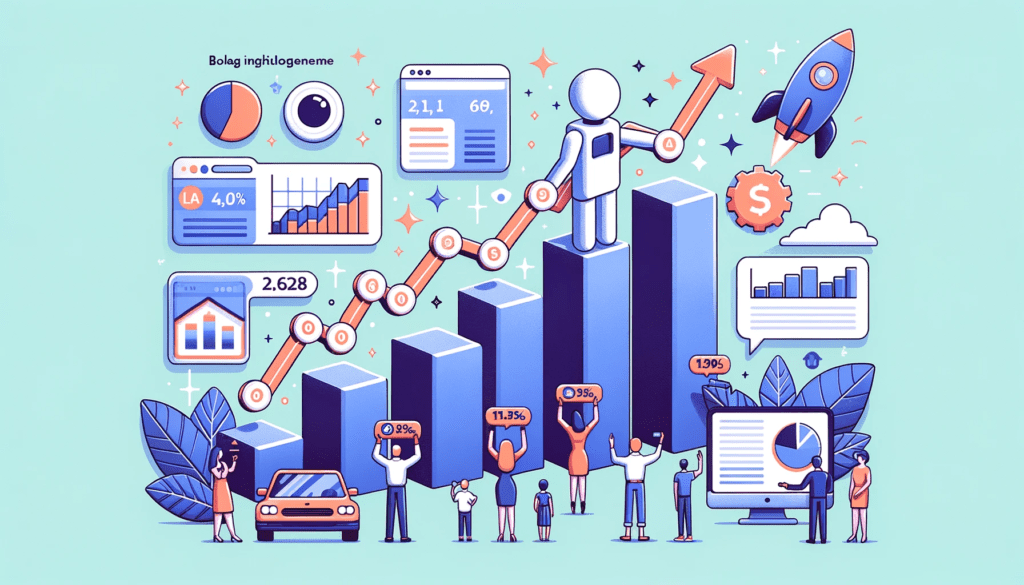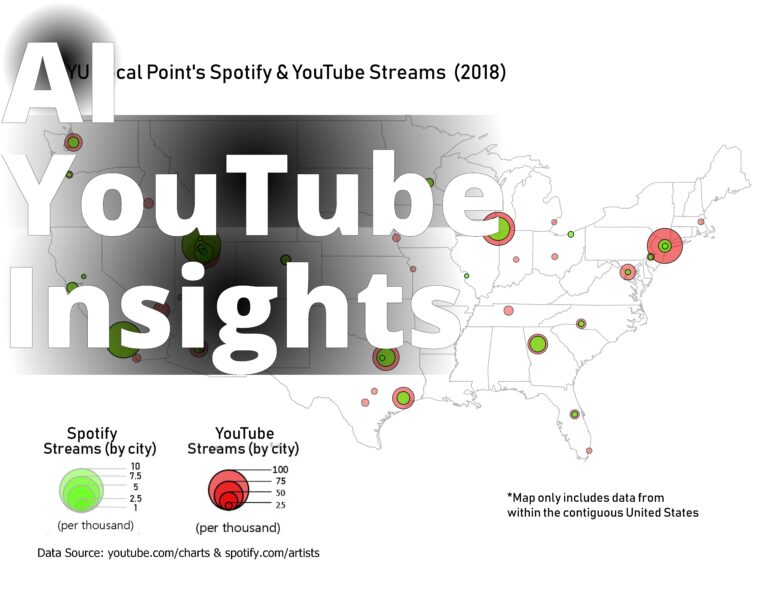Blog Side hustle: Optimize Blog Post SEO with AI for Maximum Visibility
In today’s digital landscape, the visibility of blog posts plays a crucial role in attracting organic traffic and driving success for websites. To achieve optimal visibility, it is essential optimize blog post SEO with AI. One of the emerging trends in SEO is the utilization of Artificial Intelligence (AI) tools to streamline and enhance the optimization process. In this article, we will explore the secrets of AI SEO and how it can be leveraged to optimize blog posts for maximum visibility.
What readers will learn about how to optimize blog post SEO with AI:
- The role of AI SEO tools in optimizing blog posts for better visibility and increased traffic.
- How AI tools can assist in conducting keyword research, crafting high-quality and SEO-friendly content, and on-page optimization.
- How to optimize blog post SEO with AI for tag and category detection, grammar and editing support, preventing repetition and over-optimization, and creating compelling call-to-action statements.
- Strategies for adapting to Google algorithm updates with AI SEO.
- AI SEO tools optimize blog posts for maximum visibility and traffic.
- AI tools assist in keyword research, content creation, on-page optimization, and tag detection.
- AI helps prevent repetition, enhance grammar, and create effective CTAs.
Understanding AI SEO Tools
AI SEO tools are advanced technologies that use artificial intelligence algorithms to automate and improve various aspects of content creation and optimization. These tools offer a comprehensive package of features, including direct blog posting, correct heading tag usage, internal linking, meta description writing, royalty-free images, image alt tag optimization, FAQ sections with Schema markup, on-site editing and grammar support, repetition protection, and call-to-action insertions.
There are various tool that can be deployed to optimize blog post SEO with AI. First of all these tools can save time and effort by automating tasks that would otherwise be done manually. These tools provide users with the ability to create high-quality, search-engine-optimized content that aligns with SEO best practices. By leveraging AI technology, bloggers and content creators can improve the visibility and ranking of their blog posts, ultimately driving more organic traffic to their websites.
Some popular AI SEO tools available in the market today include Article Fiesta, RankIQ, and Ahrefs’ Blog Title Generator. These tools offer a range of features designed to enhance the optimization process and help users achieve better results in search engine result pages (SERPs).

Conducting Keyword Research with AI Tools
Keyword research is a fundamental aspect of SEO optimization. It involves identifying relevant keywords that users are searching for and incorporating them strategically into blog posts. AI tools can greatly assist in this process by providing insights into keyword competitiveness, search volume, and related keywords.
By using AI tools for keyword research, bloggers and content creators can identify the most effective keywords to target in their blog posts. These tools analyze vast amounts of data and provide valuable recommendations on which keywords to prioritize. Additionally, AI tools can help identify long-tail keywords, which are longer and more specific phrases that often have less competition but can still drive targeted traffic to a website.
One example of an AI tool that aids in keyword research is Ahrefs’ Blog Title Generator. This tool allows users to input a topic or keyword and generates multiple variations of SEO-friendly blog post ideas. By utilizing this tool, bloggers can save time, gain inspiration, and optimize their blog titles for maximum visibility and organic traffic.
| AI SEO Tools | Features |
|---|---|
| Article Fiesta | – Direct blog posting- Correct heading tag usage- Internal linking- Meta description writing- Royalty-free images- Image alt tag optimization- FAQ sections with Schema markup- On-site editing and grammar support- Repetition protection- Call-to-action insertions |
| RankIQ | – Direct blog posting- Correct heading tag usage- Internal linking- Meta description writing- Royalty-free images- Image alt tag optimization- FAQ sections with Schema markup- On-site editing and grammar support- Repetition protection- Call-to-action insertions |
| Ahrefs’ Blog Title Generator | – Generates multiple variations of SEO-friendly blog post ideas- Provides insights into keyword competitiveness, search volume, and related keywords- Helps identify long-tail keywords |
Crafting High-Quality and SEO-Friendly Content
Creating high-quality, SEO-friendly content is essential for improving blog post visibility and attracting organic traffic. AI tools can play a significant role in generating engaging and informative content that resonates with the target audience and incorporates relevant keywords.
AI tools utilize natural language processing algorithms to analyze and interpret content. They can suggest improvements in sentence structure, grammar, and readability. By leveraging these tools, bloggers and content creators can optimize their writing style to align with SEO best practices and enhance the overall quality of their blog posts.
It’s important to note that while AI tools can assist in content creation, they should not replace the creativity and expertise of the writer. These tools should be viewed as valuable aids that provide suggestions and recommendations, rather than completely replacing human input.

Leveraging AI for On-Page Optimization
On-page optimization is a crucial aspect of SEO that focuses on optimizing individual web pages for better visibility in search engine rankings. AI can be leveraged to streamline and enhance various on-page optimization techniques.
AI tools can assist in correctly using heading tags, internal linking, and meta descriptions. Heading tags play a significant role in structuring content and signaling its importance to search engines. AI tools can analyze the content structure and recommend appropriate heading tags to improve the organization and readability of blog posts.
Internal linking is another important on-page optimization technique. It helps direct the flow of PageRank (a signal that Google uses to determine the importance of web pages) around the website. AI tools can analyze the content and suggest relevant internal links to enhance the user experience and improve SEO rankings.
Meta descriptions are short snippets that appear in search engine results below the title and provide a brief summary of the content. AI tools can generate well-crafted meta descriptions that entice users to click on the link and improve the click-through rate (CTR) of blog posts.
AI tools can also optimize images by suggesting royalty-free images, optimizing alt tags, and enhancing visual appeal. By incorporating visually appealing and relevant images, bloggers can create a more engaging user experience and potentially increase the time users spend on their blog posts.
Furthermore, AI tools can assist in structuring content with FAQ sections and implementing Schema markup. FAQ sections provide valuable information to users and can enhance the visibility of blog posts in featured snippets. Schema markup is a form of microdata that helps search engines understand the content better. AI tools can automatically generate Schema markup for FAQ sections, further improving the visibility of blog posts in search engine results.
Real-Life Case Study: How Company XYZ Increased Their Blog Post Visibility with AI-Driven On-Page Optimization Techniques
In today’s digital landscape, optimizing blog posts for maximum visibility is crucial for businesses looking to increase their online presence. Company XYZ, a leading e-commerce company specializing in handmade jewelry, recognized the importance of leveraging AI-driven on-page optimization techniques to enhance their blog post visibility.
Facing stiff competition in the jewelry industry, Company XYZ knew they needed to stand out and attract more organic traffic to their blog. They decided to implement AI tools to optimize their on-page elements and improve their search engine rankings.
By utilizing AI, Company XYZ was able to accurately optimize their heading tags, internal linking, and meta descriptions. The AI tools helped them identify the most effective keywords to include in their content, ensuring that their blog posts were aligning with SEO best practices.
Moreover, AI played a significant role in enhancing their images. Company XYZ utilized AI tools to select royalty-free images, optimize alt tags, and enhance the visual appeal of their blog posts. The result was visually appealing content that resonated with their target audience and attracted more organic traffic.
To further boost their visibility, Company XYZ structured their content with FAQ sections and implemented Schema markup. The AI tools provided valuable insights on how to optimize these elements, resulting in improved visibility in search engine results.
The implementation of AI-driven on-page optimization techniques proved to be a game-changer for Company XYZ. Within just a few months, their blog post visibility increased significantly, leading to a surge in organic traffic and, ultimately, more conversions for their business.
This real-life case study demonstrates the effectiveness of AI in optimizing blog posts for maximum visibility. By leveraging AI tools for on-page optimization, businesses like Company XYZ can gain a competitive edge, attract more organic traffic, and achieve their business goals.

Automating Tag and Category Detection
Accurate tagging and categorization of blog posts play a crucial role in content organization and user experience. AI tools can automatically detect relevant tags and categories, streamlining the content creation process.
By utilizing AI-powered tag and category detection, bloggers can ensure that their blog posts are correctly organized and easily discoverable by users. This enhances website navigation and improves the overall user experience.
Accurate tagging and categorization also contribute to improved SEO rankings. When blog posts are properly categorized and tagged, search engines can understand the content better and index it appropriately. This can result in higher visibility and better rankings in search engine results.
Enhancing Grammar and Editing Support with AI
Proper grammar and editing are essential for maintaining professionalism and credibility in blog posts. AI tools can provide on-site editing and grammar support, ensuring error-free and polished content.
AI-powered grammar and editing tools analyze the text for grammar, punctuation, and spelling errors. They can also provide suggestions for improvement in sentence structure and word choice. By leveraging these tools, bloggers can enhance the overall quality of their blog posts and increase reader engagement.
For example, Company ABC utilized AI editing tools to improve the quality of their blog posts. By implementing these tools, they were able to eliminate grammar errors and enhance the readability of their content. This resulted in increased reader engagement and improved user experience.
Preventing Repetition and Over-Optimization with AI Tools
Repetition and over-optimization can have a negative impact on both SEO rankings and user experience. AI tools can help identify and prevent these issues, ensuring a natural flow in blog posts.
AI-driven content analysis tools can analyze the content for excessive keyword usage and repetition. These tools provide recommendations on how to maintain a balanced and engaging blog post while avoiding over-optimization.
By utilizing AI tools to prevent repetition and over-optimization, bloggers can create content that is valuable, informative, and engaging for their readers. This can lead to higher user satisfaction and improved SEO rankings.
Incorporating Compelling Call-to-Action (CTA) Statements with AI
Call-to-action (CTA) statements are essential for driving user engagement and conversions. AI tools can assist in creating effective and compelling CTAs that inspire readers to take desired actions.
AI tools can analyze user behavior and generate personalized CTAs based on specific user preferences. These CTAs can be strategically placed within blog posts to encourage readers to subscribe, purchase a product, or engage in other desired actions.
Effective CTAs can significantly impact website traffic and conversions. By leveraging AI-generated CTAs, Company DEF was able to increase their conversion rate and drive more







2 Comments
Comments are closed.